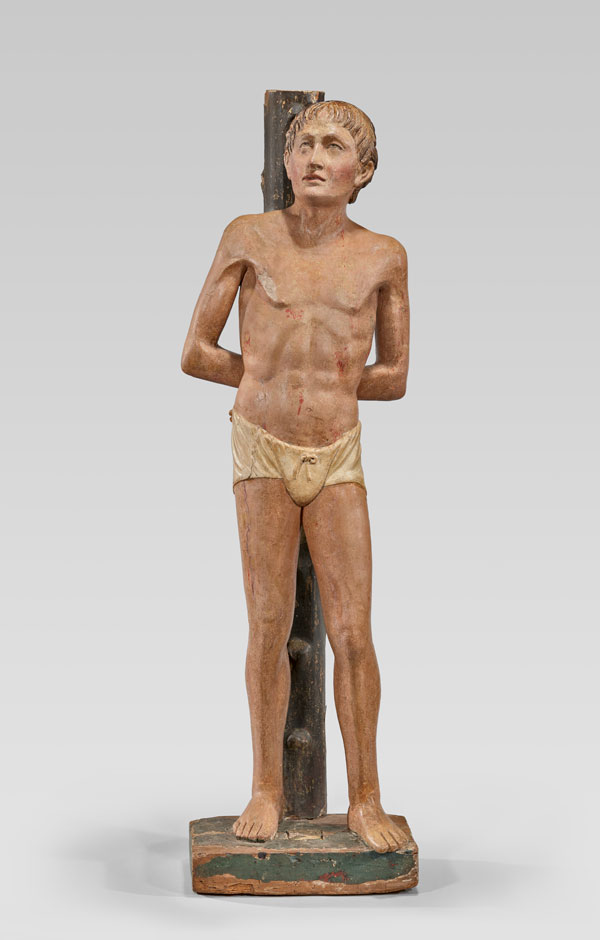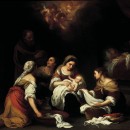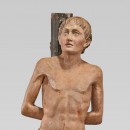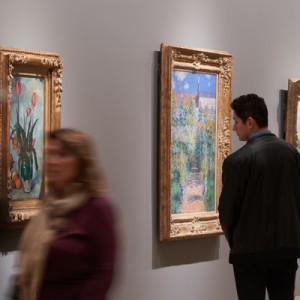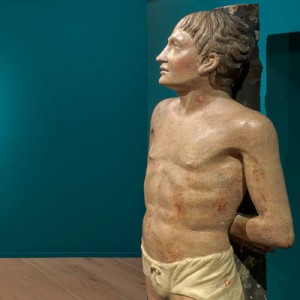Saint Sebastian: Anatomy of a Sculpture
What stories do art objects tell us? Saint Sebastian: Anatomy of a Sculpture asks this question of a 15th-century Italian painted sculpture of St. Sebastian in the Norton Simon collections. Through historical and scientific research, this exhibition explores the rich life of this previously unstudied sculpture from its creation to its arrival at the Museum.
According to legend, Sebastian was a 3rd-century Roman soldier condemned to death by Emperor Diocletian for his Christian beliefs. The saint is usually depicted in the aftermath of an attempted execution, bound to a tree and bristling from the firing squad’s arrows. Miraculously, he survived, and his recovery from his wounds eventually became associated with healing from the sores caused by the bubonic plague, inspiring numerous images of the saint in churches, shrines and private homes.
Centuries later, the ownership history of such an object can be difficult to trace. As with many other Italian polychrome, or painted, sculptures, the Museum’s Sebastian entered the international art market more than 100 years ago, and its written record is scant. Much can be gleaned from the sculpture itself, though. For instance, X-ray imaging and chemical analysis conducted with the Decorative Arts and Sculpture Conservation Department at the J. Paul Getty Museum revealed the sculpture’s internal structure and material composition. This data unlocks new aspects of the sculpture’s historical context, and offers insight into the processes of carving wood, molding gesso and applying flesh-colored paint, all of which would have taken place collaboratively in an artist’s workshop. Given the importance of visual art in 15th-century Christian religious practice, creating this sculpture would have been a collective labor of devotion.
Saint Sebastian: Anatomy of a Sculpture offers an in-depth exploration of an object that held profound spiritual meaning for both its makers and its original viewers. This exhibition aims to enrich our understanding of its context and to show how technical and historical research can divulge important details about the long lives of works of art.

